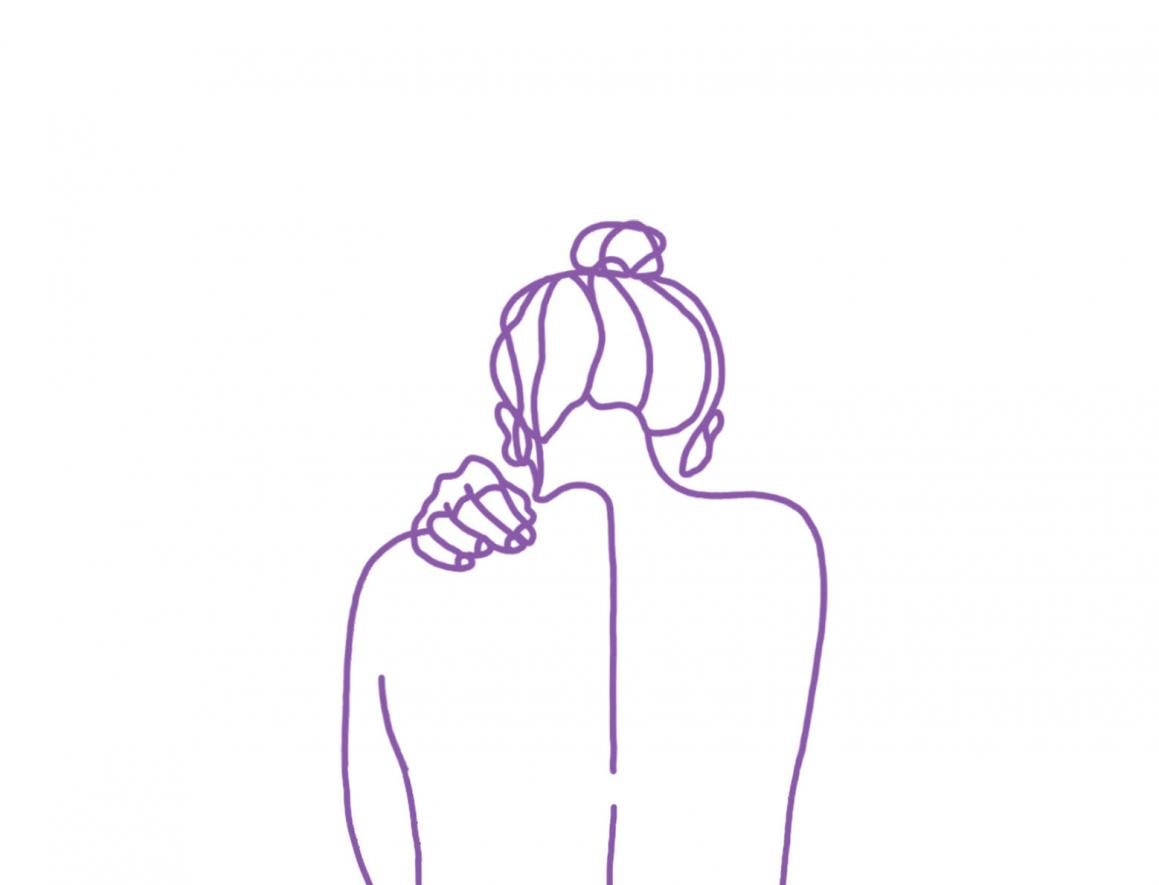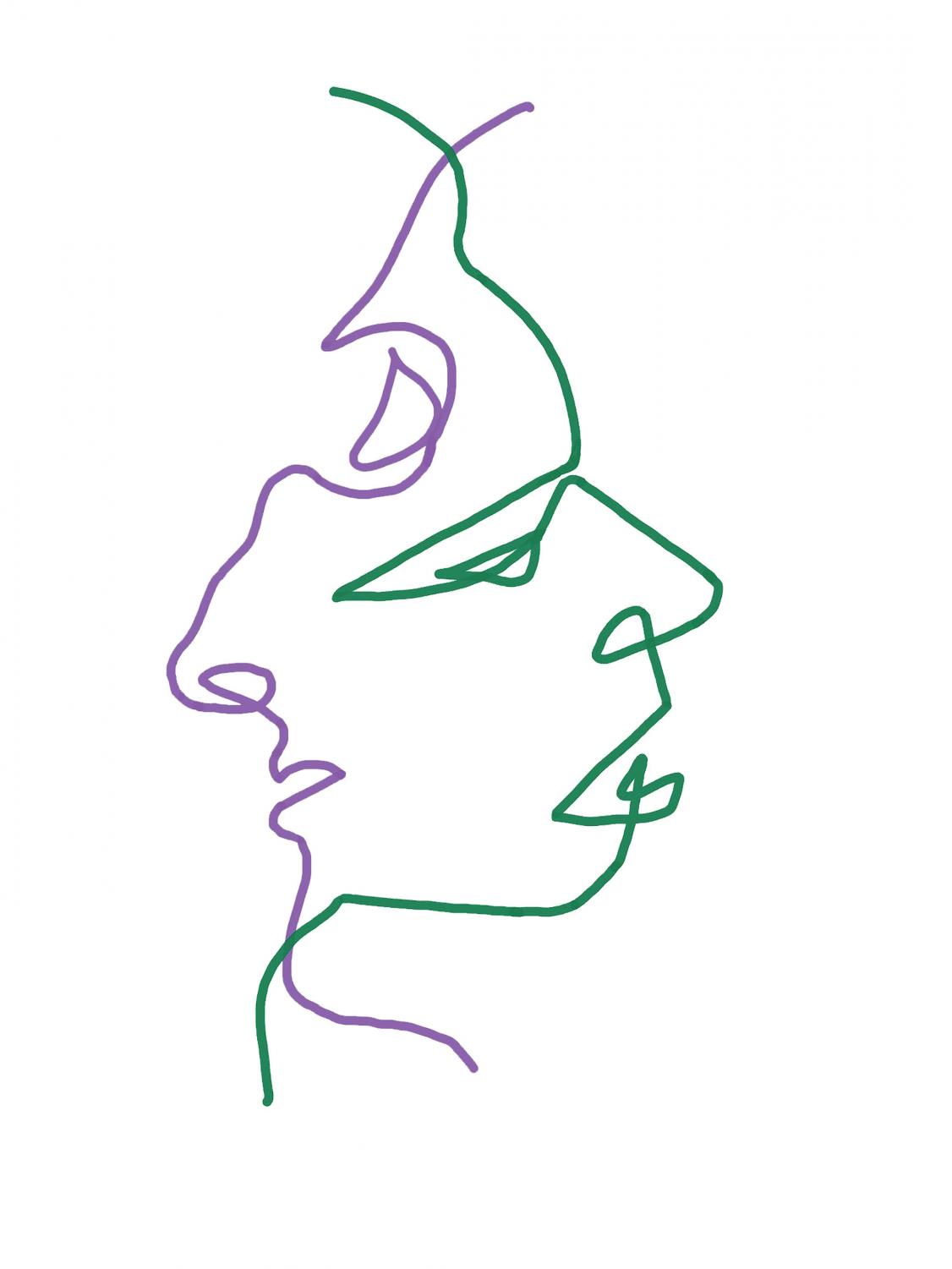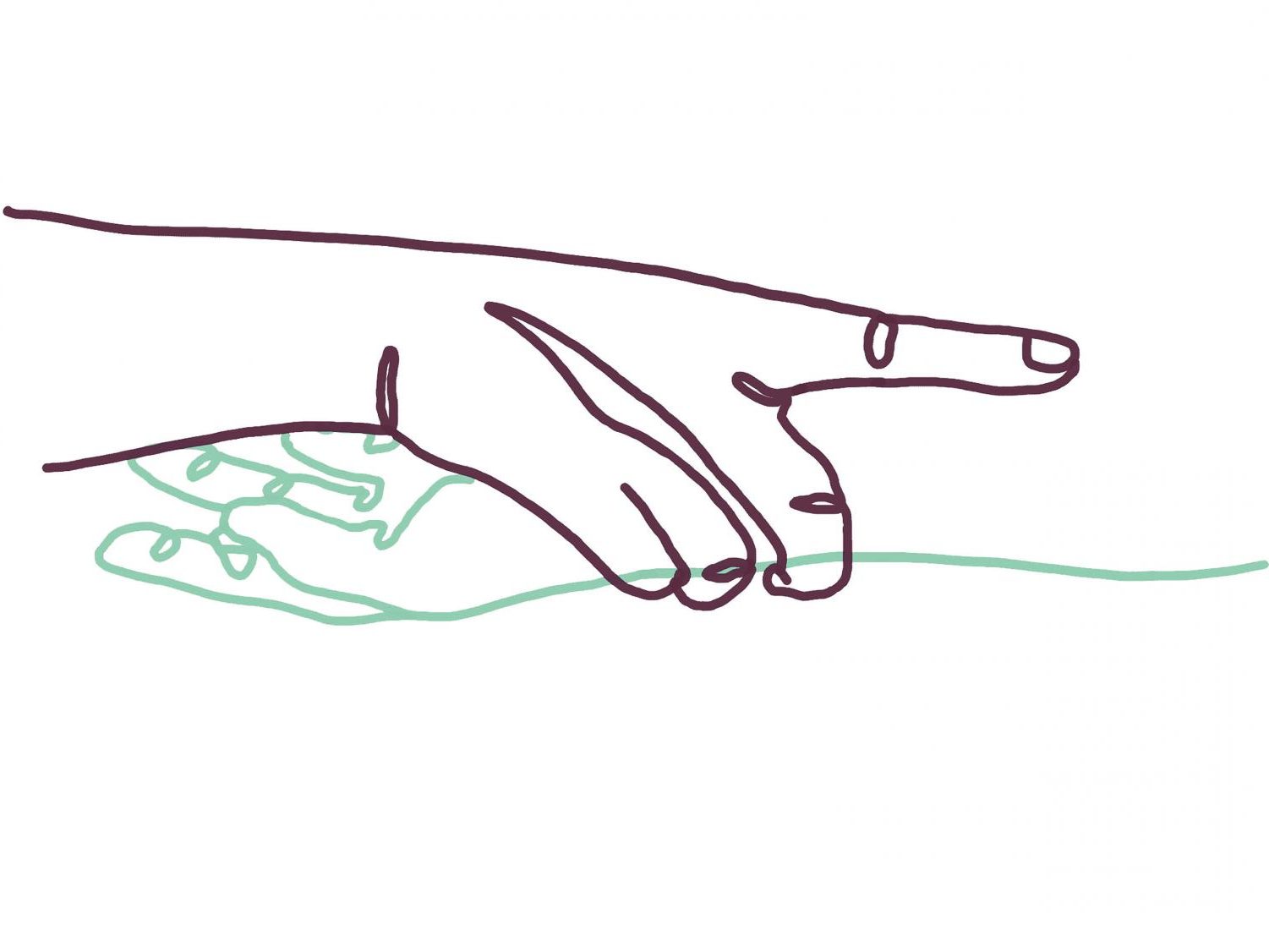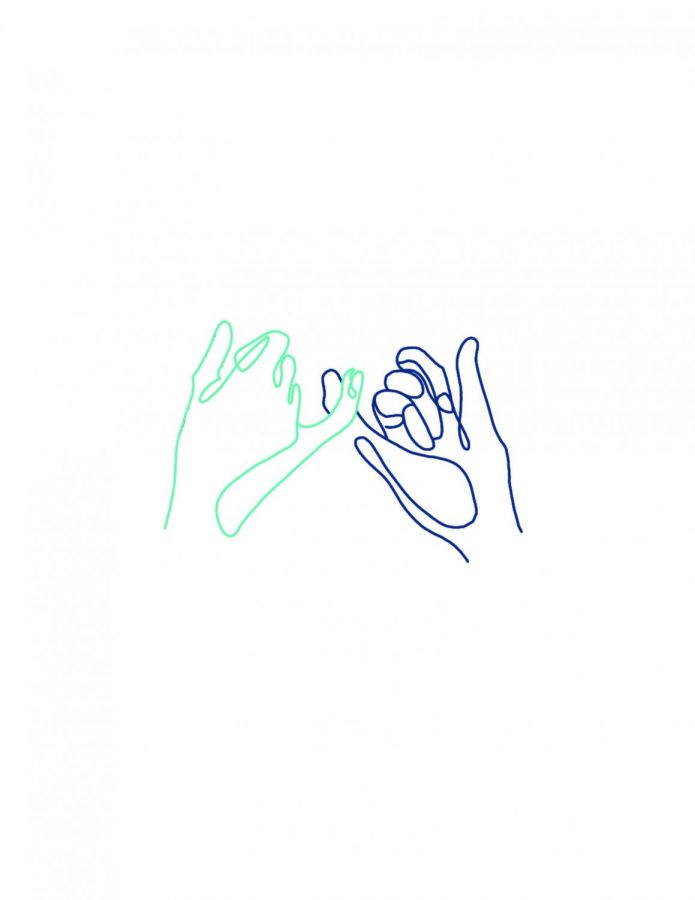Red Flags
An examination of abusive relationships and why we don’t often recognize them.
WARNING: This feature contains illustrations of abusive relationships and violence which may be upsetting to some of our readers.
FOR HELP: Call 1.866.331.9474 or Text: loveis to 22522
More than two and a half years after Sara broke up with her now ex-boyfriend, he tracked her down at a parking garage in San Rafael. Sara said that when she first saw him she thought it was odd, but continued to her car on the assumption that he was on his way to somewhere else and hadn’t seen her. However, he followed her to her car, angrily asking why she was ignoring him despite the fact that he knew she’d seen him.
Sara, a senior and a reporter for The Tam News, was surprised to be confronted by her ex so long after they broke up. Their relationship had never been of much concern to her while she was actually in it; indeed, the word abusive would never have even crossed her mind. However, a recent study by Women’s Aid and Cosmopolitan UK revealed that 2/3 of women who reported they’d never been in an abusive relationship had actually experienced abusive behavior and hadn’t recognized it as such, or didn’t deem it “bad” enough to be true abuse. Those numbers are even worse for teenagers: over half of high school-age students are severely lacking in ability to identify and leave abusive or harmful relationships. This goes to show how necessary coverage of abuse and relationships is in school; without it, kids must navigate their lives with next to no knowledge of how to build the healthy, caring relationships that keep them out of danger.
In Sara’s case, her ex revealed his violent and irrational tendencies long after the end of the relationship. He cornered Sara, pushing her and slamming her backwards against the car. She attempted to reason with him and asked why he’d found her in the first place, but he brushed off her questions, calling her a bitch and accusing her of lying to him during the breakup. “This is not a small guy … and like I’m tall, I’m big, and I can defend myself pretty well. But I felt like I might as well have been three feet tall,” Sara said.
“And then he punches me in the arm, very hard … and it was then and there I was remembering all the red flags about him having clear anger issues, but me not realizing it because it never got that extreme in our relationship … And he goes to punch me again, and I punch him,” she said. Her ex-boyfriend fell backwards, hitting his head on a parked car. A bystander saw him fall and called the police, who took Sara’s ex into custody after viewing the security footage that proved Sara’s actions were purely self-defense.
His resulting trial revealed a pattern of abusive behavior, repeated in the testimonies of three other girls. “I started dating [him] freshman year, and … I was definitely young and a little bit naive in the sense that I was like, ‘Oh cool! An older guy,’ you know what I mean?” Sara said. “During the entire relationship there were definitely red flags that I didn’t catch, just things he would do, like he would get mad at me for really stupid reasons and threatened to break up with me … and he would just play the victim often. I was just like—I didn’t care. I would care now, but I didn’t then … But [the trial] just made me realize how lucky I am that for me it wasn’t that bad. I mean, I just thought about what would’ve happened if, like I didn’t hit back or fight back, or if I was smaller,” Sara said.

According to the National Coalition Against Domestic Violence (NCADV), Sara is one of 1.5 million high school students across the country who have survived a toxic or abusive relationship this year. The NCADV also stated that an average of nearly 20 people per minute are physically abused by their intimate partner, and in 2015, 928 women were killed by theirs. Domestic violence and intimate relationship abuse account for 15 percent of all violent crime, and yet it receives negligible coverage in the classrooms of the kids who will eventually have to navigate their own potentially dangerous relationships.
According to loveisrespect.org, a domestic abuse informational resource and hotline, abuse does not necessarily include physical violence. Any action designed to submit one partner in a relationship to the other partner’s will is abusive, including less obviously concerning behaviors, such as controlling or possessive limitations on who the the abuser’s partner can interact with in person or on the phone.
However, more subtle examples that are often dismissed include extreme jealousy or protectiveness, demanding access to the partner’s phone and social media to “check up on them,” or mandating that the partner spend all or most of their free time with the abuser. Abuse also includes verbal statements designed to make the abuser’s partner feel inferior, trapped, or dependent on the abuser, or to guilt them into staying in the relationship. Such statements may include: “No one will ever love you as much as I do,” “You’re making too big a deal of this,” “You’re overreacting,” or “You’ll never find anyone else.”
In relationships where the abuse is severe, ongoing, and/or lasting over a longer time period, the abuser’s partner may eventually develop anxiety disorders, paranoia, emotional disconnect, and even Post Traumatic Stress Disorder (PTSD), which can last for years after the end of the relationship. According to domesticshelters.org, 23 percent of domestic violence survivors have attempted suicide, significantly higher than the 3 percent of people who reported no prior domestic violence.
An anonymous former Tam student and current college sophomore, who will be referred to as Kyle, said he suffered from an abusive high school relationship.
“It messed me up, man. Like yeah, she was f**king crazy, but I just thought that’s how it was supposed to be, right?” Kyle listed several of his ex’s abusive behaviors, including constant phone checks, extreme jealousy, frequent arguments, and constant accusations of cheating, lying, or avoidance.
“Whenever I wasn’t answering my phone or I was with my friends or something she’d think I was cheating on her and we’d get in this huge fight. It made me fucking paranoid, man,” he said. “Even now the girl I’m dating is chill and she’s totally different, but sometimes if I’m just chilling or with my friends or something I’ll have this second of panic where I freak out for a sec before I remember that this is something I’m allowed to do. [My ex-girlfriend] scarred me.”
Upon being told by several of his friends and family members that his relationship was unhealthy, Kyle’s immediate response was one of denial. “I didn’t want to even think about what she was doing as like abuse, y’know. I never really thought about it, and even when I did, what came to mind was a woman with bruises and shit on her face, and like that’s so not how it was with me and [my girlfriend]. She never hit me or anything, and anyways I was the guy. It couldn’t be abuse because a girl couldn’t be the abuser,” Kyle said.
While many warning signs may seem obvious, they can be difficult to recognize within the context of an actual relationship. The Tam News conducted a survey, consisting of twenty “statements” made by people in hypothetical relationships, such as “My boyfriend’s been asking me to try taking birth control again. Last time it made me feel sick, but he’s being so insistent I think I’ll try again anyway” or “My girlfriend goes through my phone once a week to make sure I’m not cheating on her”. Respondents were asked to determine if the statements were indicative of an abusive/toxic relationship, or to mark that they were unsure/didn’t know. 30 freshmen students were able to correctly identify 5.93 of the ten hypothetical examples of healthy relationships on the survey, and 8.03 of the ten abusive ones, while 30 seniors averaged 6.65 of the healthy and 8.00 of the abusive. A statistical analysis of the data revealed that senior and freshman scores had essentially no difference, indicating that senior students did not learn more about what constitutes an abusive relationship during their high school education.

Of the three anonymous sources interviewed, two were able to identify at least eight of the ten abusive behaviors on the survey as such. However, when speaking about their own experiences in their relationships, they acknowledged those same behaviors as troublesome, but denied that they were abusive.
“I know it’s probably not good that he’s so jealous and protective of me and doesn’t like it when I go to parties and stuff, but like, everything else is fine, so I don’t think it’s that big of a deal,” one anonymous senior girl, who will be referred to as Jane, said. “I’m willing to make compromises to make it work, and I get it, why he wouldn’t like me talking to other guys.”
According to the National Domestic Violence, “In an unhealthy or abusive relationship, making justifications for a partner’s behavior is common. When your partner continually makes excuses for how they treat you, it’s only normal that you may start making similar excuses and echoing their sentiments.”
When presented with the definition of abuse, which indicated that she was in an abusive relationship, Jane responded, “Well, okay it’s different in that case. [My boyfriend] doesn’t think other guys are bad or anything, he just like, knows how guys think and what they want. He’s just looking out for me. Plus it’s so much easier to go, ‘Oh yeah that’s abusive,’ if it’s someone else’s relationship that you’re like not a part of. But if you try to look at the person you’re dating and go, ‘Is that abusive?’ the answer will be no because you, like, know the person and you know they’re not abusive.”
Wellness Coordinator Hannah Wright affirmed. “It’s easy, especially when you’re in it, to feel like it’s normal and that’s what can be really harmful and problematic about cycles of violence, that you care about the person you’re in the relationship with, and abusive behaviors and verbal comments can get normalized in a way that you don’t even recognize [as] harmful.” Victims are often too close to the issue to be able to identify the relationship as abusive.
Parenting advice websites warn about abusive and damaging relationships that kids as young as 11 or 12 may experience. They discuss the lasting psychological effects, including anxiety disorders and PTSD, that those relationships cause, as well as how to recognize them. However, according to the NCADV, 81 percent of parents believe teen dating violence is not an issue or admit they don’t know if it’s an issue, and though 82 percent of parents feel confident that they could recognize the signs if their child was experiencing dating abuse, a majority of parents (58 percent) could not correctly identify all the warning signs of abuse.
However, all hope is not yet lost. Several students are themselves aware of the shortcomings in their education, and hope to fix them.
“I think that abusive relationships should be discussed at every grade level throughout high school. By doing this you can customize the lesson content to the students age and add on each year so it’s more age appropriate and will be easier to remember. So for freshmen you cover the basics as people start to date more, and each year you develop the ideas,” junior Elena Dworak said.
Tam Bay Area Community Resources (BACR) therapist Kathryn Scruggs concurred on the topic of increasing education. “I think there’s maybe just a lack of awareness about what [abusive relationships] can look like, how it can be something as simple as being controlling over someone’s texts, or their friends, and who they’re hanging out with,” she said. “People think, ‘Oh, they just really care about me so that’s why they’re jealous,’ but other times that can lead to other things. And so I think that it’s important to build more awareness about what different aspects of a controlling and potentially abusive relationship look like … It would be great if [relationship abuse education] was sort of a mandatory unit in some class, for sure, so that everyone gets some information about it. I think there are different issues that come up as you get older, and so what might be relevant when you’re a freshman might be different senior year … so it would be great to have it every year if possible.”
Even the briefest of coverage on the topic can have an enormous impact if it comes at the right time. One anonymous Redwood junior, who will be referred to as Samantha, became aware of the symptoms of a toxic relationship when her sister, a college student studying psychology, spoke to her about it.

“She’s always been there to help with dating stuff and give me relationship advice,” Samantha said. But then one time when she was home for Christmas break, she overheard me on the phone fighting with [my boyfriend], and she called me into her room to talk about it. I was ranting about what he was doing, and what I was doing, and she stopped me and went like ‘I think that’s an abusive relationship.’”
However, it wasn’t the boyfriend that her sister was concerned about. “It was hard for me to hear … When [my sister] first brought it up, I thought she was talking about [my boyfriend] being the abusive one, and we were so rocky at that point that I nodded along and actually kind of agreed with her … But then when she realized I misunderstood and made it clear she was talking about me, I was shocked. It was like being slapped,” she said.
“I argued with her. I immediately went like, ‘What, no, that’s impossible, what are you talking about?’ But then she listed all these symptoms of abusive relationships, like how much I checked up on him and how he let me go through his phone and stuff, and I realized like, ‘Oh my god, she’s right.’ I didn’t even realize I was doing it. I didn’t realize that that was even a possibility. It was crazy. I felt sick, like actually nauseous and sick, like I had a cold or the flu or something. We were in such a bad place and we were fighting so much all the time but I never, ever thought that what was happening could actually be like, real abuse.” Since then, Samantha has been working to identify and remedy her abusive behaviors.
Samantha is not alone in her school or in our district. While no official census has been gathered, nearly every student I spoke to had a story about a friend or family member who was/is in a toxic and damaging relationship. The fact that such stories have become so normalized is the very reason why Tam is in such desperate need of any kind of relationship education. A few students have learned, through the advice of others or their own first-hand experience, what abusive relationships look and feel like, but many are still uneducated on the issue. Every student in this school deserves that knowledge, and a class centered around the prevention of abusive relationships could spare countless students the pain and suffering of an abusive relationship.
For Samantha, the worst part about opening her eyes to what she had been doing to her boyfriend was that it took someone else to actually open them. If her sister has not intervened when she did, Samantha and her boyfriend could have continued indefinitely as they were. “The scariest part was that I didn’t know,” she said. “I was hurting him, actually hurting him, and I had absolutely no idea. And like, there are so many other girls, and people, out there who do all the stuff that I did. And that’s causing damage, and that’ll continue to cause damage until people realize what abuse actually is.”


